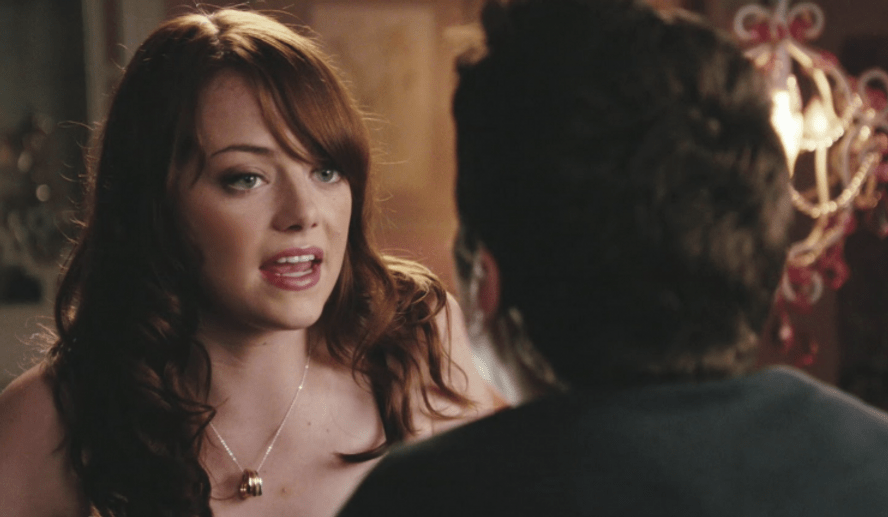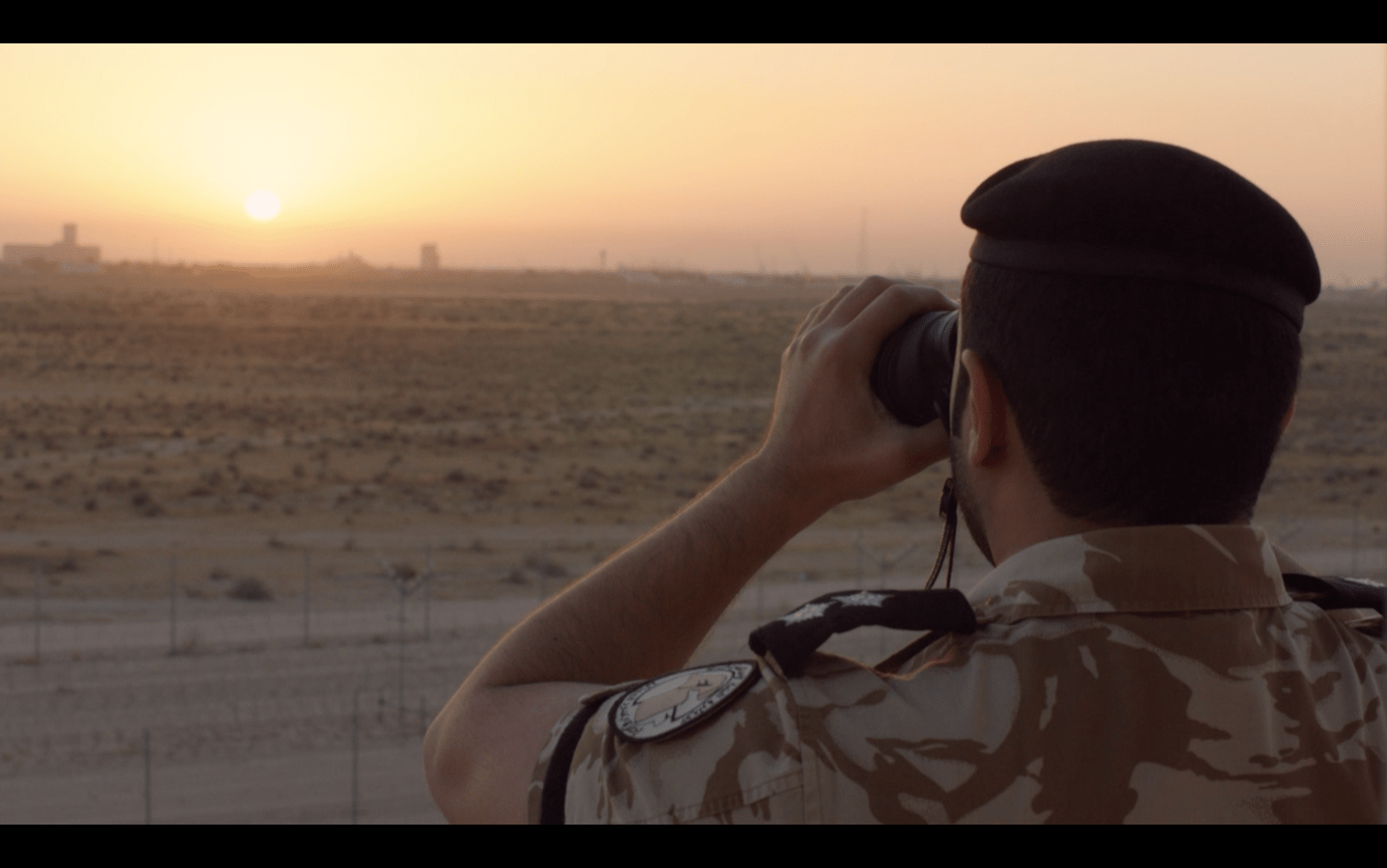In film or television, an ‘over the shoulder’ shot is when the camera is positioned behind one character and facing another, so the one character’s shoulder and back face the audience.
In other words, the shoulder of an off-screen actor is in the foreground while the on-screen actor has complete coverage. The off-screen actor’s shoulder and sometimes the back of their head is in the frame due to the camera’s placement.
Uses for the Over the Shoulder Shot
Here’s a closer look at how a dramatic impact on a scene can have over the shoulder shots:

Over the shoulder shots can influence how the audience interprets a scene. Some of the main uses of the OTS are to:
- Orient the viewer and provide a new viewpoint: OTS shots use POV to illustrate where characters are connected and are perfect for giving the viewer a fresh perspective to make the scene more dynamic or provide the view of another character in a scene.
- Create intimacy in a conversation between two characters: This camera angle often suggests a relation or level of intimacy to the audience at an emotional level, particularly when two or more characters are conversing. Conversely, it can signify a disconnect when you split from this. The camera usually alternates from concentrating on one character in the shot to the other when used during a conversation, helping you to empathize with each character.
- Track participants’ reactions in a group conversation: There are occasions when its uses are more realistic than emotional. For example, when filming a group conversation, it can be challenging to track who is discussing whom. An over the shoulder setup will help explain where each character focuses their gaze and to whom they are talking.
Over the Shoulder Shots vs. Single or Two Shots
Compared with other shot angles, specifically single shots and two-shots, filmmakers typically use over the shoulder shots. Single shots separate a character, usually referred to as single framing, concentrating solely on their feelings and actions.
Many filmmakers switch into medium-shot single framing from an over the shoulder shot. This is also a much more organic way to focus on a character, particularly an intense emotion, than switching to a more dramatic shift, like a close-up.

By contrast, a two-shot reveals both characters in the same frame. This technique is used by filmmakers where single shots and over the shoulder shots show the audience the setting and surroundings outside the characters’ personal and often intense bubble. A two-shot can convey the evolving relationship between two characters by revealing both characters’ body language and facial expressions concurrently.
How to Film an Over the Shoulder Shot
To build an easy but successful over the shoulder shot involving two characters, follow these steps:
- Start by taking a two-shot. While not always appropriate, beginning the scene with a two-shot may help establish context and clarify the parties involved in the exchange or conversation. For the audience, this provides a much-needed bond.
- Determine the best placement for the camera. Traditionally, shots over the shoulder mean just that it is a shot that takes place over the shoulder of the off-screen character. Depending on the scene and what you are looking to share, you can get creative with this. For instance, if the foreground character carries a gun, you may want to change the placement to more than one over the hip shot, meaning that the character’s hip is in the foreground instead of their shoulder or head.
- Decide the positioning of the ideal character. In the frame, how much of the foreground character you want is entirely up to you. To see how much or how little you want them in the picture, play with different positions. During this time, remember to pay attention to the camera angling, maintaining the background character’s eye line level with the camera and the features of the foreground character obscured.
- Get the shot and the reverse shot after that. Typically, when filmmakers use over the shoulder shots, they alternate between the viewpoints of both characters. For that, to match, you usually need a reverse shot. For example, make sure that both shots are dirty or clean and that the distance is consistent between the camera and your subjects.
At Cinemagic, we continuously empower the youth and young film-makers to try out new things. As you can see, the over the shoulder shot has many diverse uses. So make sure you add it to your shot list today!
